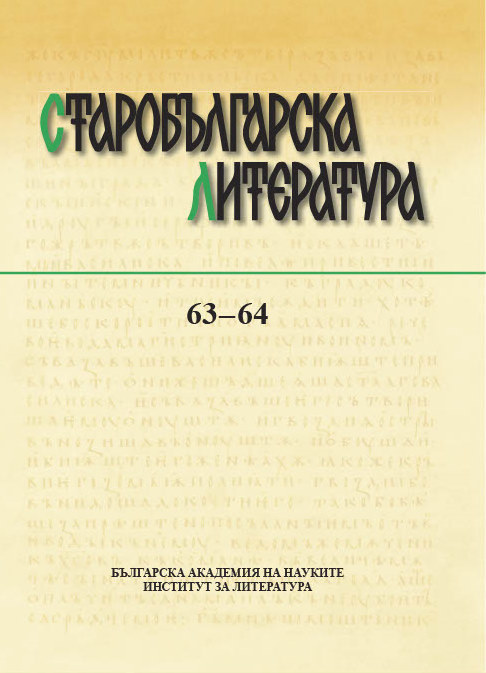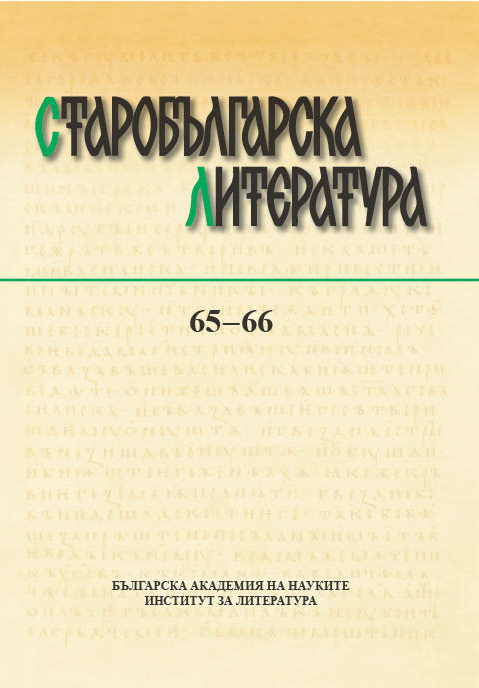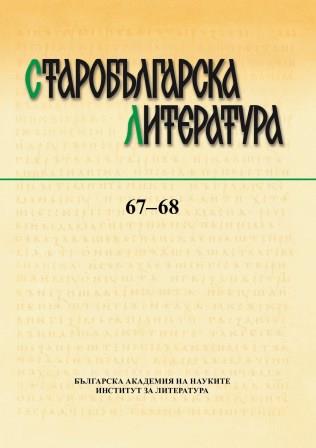
Кратко историческо описание на cветата Велеградска митрополия от Антим Алексудис и сведенията за св. Седмочисленици в него
This paper seeks to present the notes and references to the Seven Slavic Saints in the work by Anthimos Alexoudis, Bishop of Berat, published in 1868 under the title “Σύντομος ἱστορικὴ περιγραφὴ τῆς Ίερᾶς Μητροπόλεως Βελεγραδῶν καὶ τῆς ὑπὸ τὴν πνευματικὴν αὐτῆς δικαιοδοσίαν ὑπαγομένης χώρας”. A short biography of the author is provided to trace his education and career as a clergyman close to the Oecumenical Patriarchate. Particular attention is paid to his research interests in the fields of palaeography, epigraphy and church history by offering a bibliographic description of his most important works. In order to reveal the genesis of bishop Anthimos’s interest in the life’s work of the Holy Heptarithmoi (the Seven Slavic Saints), an attempt is made to reconstruct various aspects of the spiritual atmosphere in the diocese of Berat relating to the Slavic enlighteners: oral tradition, religious services and church representations. A brief overview of the contents of Anthimos Alexoudis’ book is placed within that cultural-historical context. It is noted that in his work the clergyman mentions the Seven Saints three times – in the seventh, eighth and tenth chapters – and the relevant excerpts are translated into Bulgarian. Attention is also paid to the fact that the bishop has committed himself to the preservation of the relics believed to have belonged to Sts Gorazd and Angelarius: a reliquary was made for the purpose with the costs covered by the metropolitan church. In conclusion, it is emphasised that the book by Anthimos Alexoudis testifies to the fact that one century after abolishing the autocephaly of the Archbishopric of Ochrid and placing its diocese under the jurisdiction of the Oecumenical Patriarchate, the memory of the life’s work of the Seven Saints was infallibly kept alive in the furthermost south-western regions. In the diocese of Berat there were two traditions of commemorating and celebrating these saints in the eighteenth and the ninetenth centuries: in Berat their feast day fell on 26 November; and in Moscopole their feast day fell on 17 July. Influenced by the then available Greek sources, by the oral tradition and by his own impressions, Anthimos Alexoudis composed a “Beratocentric” narrative about the life’s work of the Seven Saints, where he showed himself to be sympathetic both to the facts of the Bulgarian history and toward the contemporary Bulgarians, whom he called “our brethren in Christ”.
More...

